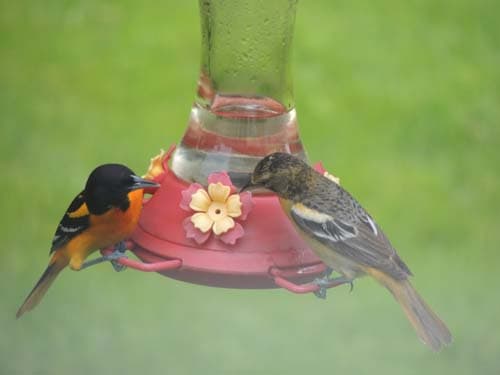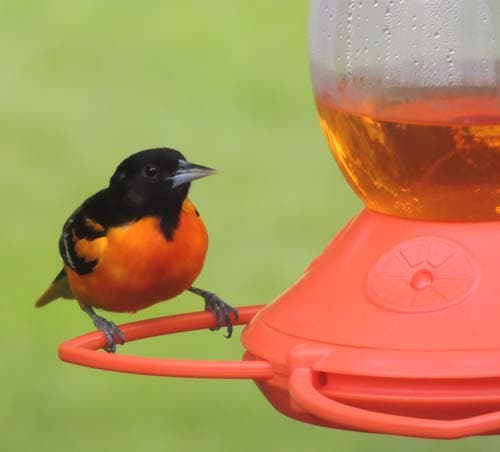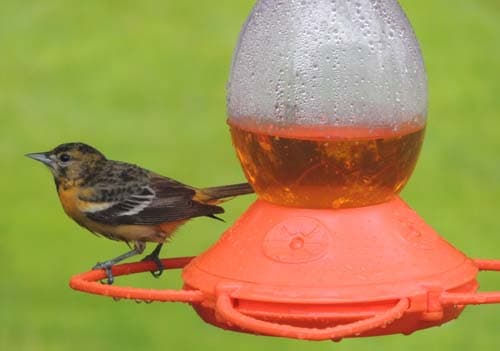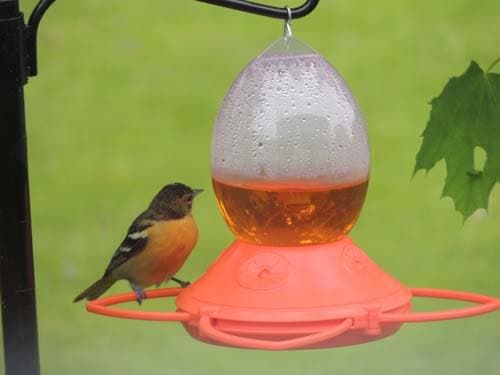
The Baltimore Oriole is native to North, Central, and South America. They spend spring through summer in eastern North America. In the Fall, Orioles migrate to Central America and the Northern part of South America, where they spend the fall and winter months. These brightly colored birds are fun to watch. They are popular among birders and backyard enthusiasts. The Baltimore Oriole diet is fairly broad. However, they do not eat birdseed. You can attract them to your backyard in the spring with a bright orange-colored birdfeeder willed with an orange-flavored nectar feeder.
They have black tails, tipped with orange, and an orange chest and belly.
Baltimore Orioles are easy to spot. These birds are 7-8 inches long and are smaller than robins. Their bright orange belly is an easy giveaway.
Male Orioles have a bright orange belly, black head, and one white bar on their black wings. Females have mottled gray to black feathers on its head and back. It looks a little like a sparrow. Her underbelly is a duller orange.

The female has a much duller orange chest, fading to a white-ish belly. Her head is grayish, and she has 2 bold white stripes (or bars) on her wings. See more Baltimore Oriole pictures.
The birds live up to 11 years in the wild. They can live even longer in captivity.
Hawks and falcons are their most common enemy.

Baltimore Orioles dwell in the edges of deciduous woodlands. These birds do not go far into deep forests. They are commonly found in parks and backyards, favoring shade trees.
The female builds a nest that is shaped like a hanging basket. She typically lays four grayish-colored eggs. eggs.
The Baltimore Oriole’s diet includes:
Nectar
Fruit – Oranges are their favorite. In addition, they also eat apples, berries, and a wide variety of other fruit. Try hanging orange an apple halves around shade trees.
Insects – The birds can often be spotted high up on a shade tree, in search of insects.
Peanut Butter
Jelly
Orioles will be found at Hummingbird feeders. Hummingbird feeder ports are small for their beaks. Bright orange Baltimore Oriole nectar feeders, which have bigger feeding ports, do a better job attracting them and keeping them in your backyard.
Oriole Nectar Ingredients. You can make your own nectar using one part sugar to 7 parts water. (Much less sugar than a hummingbird feeder). Store nectar mixes are usually orange-flavored, a treat for these birds.

Here’s more information on your favorite backyard birds:

©1999-2024 GardenersNet.Com, All Rights Reserved